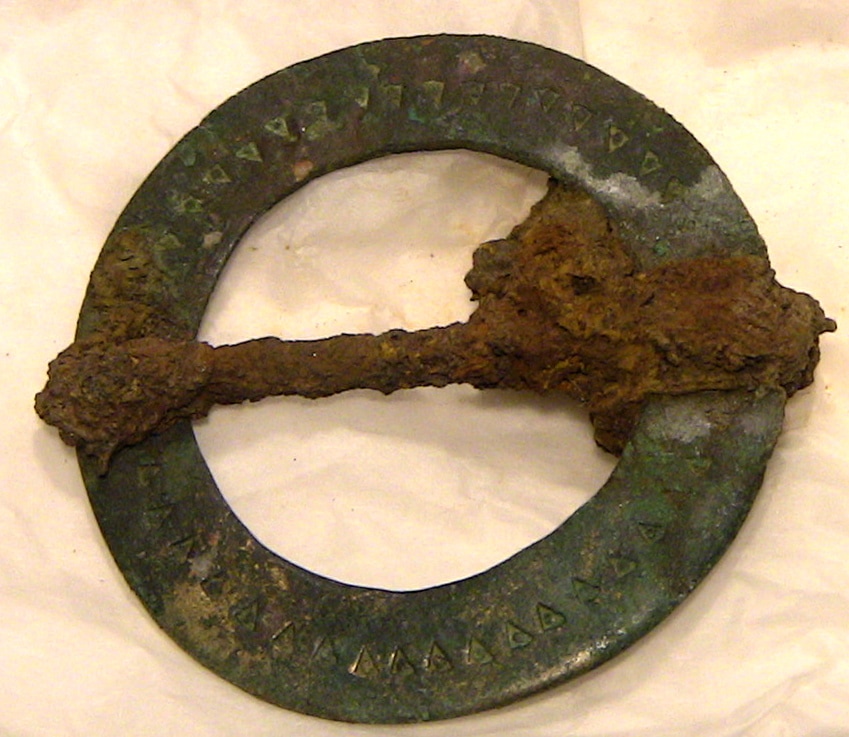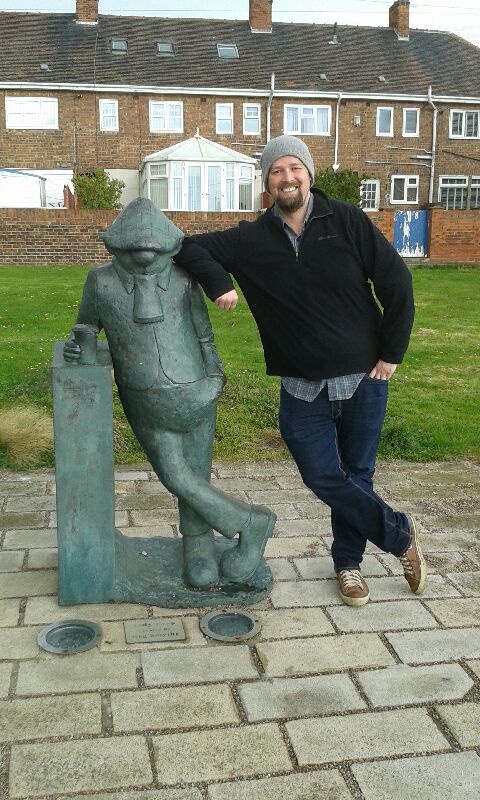The People and Place project has completed our identification of burial sites in Northumbria and have a very detailed list of over 550 locations in the database. We are now moving in to the second phases of our investigations and this includes the weighing of grave goods from around the region. Obviously finding over 6000 objects in museum archives would be an unrealistic undertaking, so we have adopted a sampling strategy based on easily accessible material with good publication.
To that end some of the team spent the day (April 27, 2017) in the stores of Tees Archaeology in Hartlepool (http://www.teesarchaeology.com/home/home.html), recording metalwork from the Mill Lane mixed rite cemetery from Norton, published by Steve Sherlock and the late Martin Welch in a CBA volume in 1992 (available on line).
To that end some of the team spent the day (April 27, 2017) in the stores of Tees Archaeology in Hartlepool (http://www.teesarchaeology.com/home/home.html), recording metalwork from the Mill Lane mixed rite cemetery from Norton, published by Steve Sherlock and the late Martin Welch in a CBA volume in 1992 (available on line).
Many of the higher status and more immediately attractive artefacts are on display in Preston Park Museum, Stockton-on-Tees, but this is not a problem in terms of the weighing methodology. What the methodology seeks to achieve is an interpretation of the background ‘noise’ of the use of raw materials in the more everyday objects by different inhuming communities. Only complete metal artefacts were weighed in a Fordist regime of unpacking, inspecting, weighing, recording and repacking – a surprisingly swift and efficient routine.
In a list a knife is just a knife, perhaps with a typology applied based on shape. By weighing we can record in shorthand the differences between objects of the same type and by accumulating data interpret these differences over time and space. Already today we could demonstrate that most knives from Norton were rather insubstantial, even the Evison Type 1 knives, probably the most common form nationally, particularly in comparison to those from iron-rich communities in the south east of England. Even this seax is not as weighty as its southern counterparts.
In a list a knife is just a knife, perhaps with a typology applied based on shape. By weighing we can record in shorthand the differences between objects of the same type and by accumulating data interpret these differences over time and space. Already today we could demonstrate that most knives from Norton were rather insubstantial, even the Evison Type 1 knives, probably the most common form nationally, particularly in comparison to those from iron-rich communities in the south east of England. Even this seax is not as weighty as its southern counterparts.
The very commonly found annular brooches vary in weight from 3g to 12g, but this data helps us to reflect on the varying forms found in the burials, with small but dense objects outweighing their larger but flatter counterparts.
Unusually there are iron annular brooches here too and they are generally heavier – a usage of raw material that sits in contrast to the perception, from the knives, of the Norton community as being iron poor. There are more substantial copper alloy objects deployed in the burial, such as florid cruciform brooches, but of particular interest will be the long dress pins that on current data appear to be more uniform in weight across different sites in the study region.
Our thanks go to Rachel Grahame for allowing us access to the archive.
Our visit to Hartlepool concluded with a trip over to the Headland, site of over 150 burials relevant to our project time frame, although with many more spread across this isolated and today a rather inhospitable location due to a heavy rain. At least we could catch up with Hartlepool’s most famous if mythical son Andy Capp!
Sue Harrington
Our thanks go to Rachel Grahame for allowing us access to the archive.
Our visit to Hartlepool concluded with a trip over to the Headland, site of over 150 burials relevant to our project time frame, although with many more spread across this isolated and today a rather inhospitable location due to a heavy rain. At least we could catch up with Hartlepool’s most famous if mythical son Andy Capp!
Sue Harrington



 RSS Feed
RSS Feed
